
Engineers’ Week took place between the 25th of February and the 3rd of March. We all took part in Science experiments and K’nex challenges to get us thinking about what life would be like to be an engineer! Third Class wanted to find out more about aeronautical engineering as many of us love to make and experiment with paper aeroplanes. Here is how we carried out our investigation.
Paper Aeroplane Investigation
We began this experiment by discussing how we thought a piece of paper would travel through the air if thrown. When we through a sheet of A4 paper, it didn’t travel very far. The air seemed to catch the paper and cause it to move from side to side until it landed on the floor. We then scrunched up the paper into a ball and threw it. This was much better. The ball of paper flew through the air. Our teacher then set us a challenge; could we make a paper aeroplane that would travel as well as the balls of paper?
We helped each other to make paper aeroplanes and sat around in a circle to discuss them.
Next, we each found a partner. Our partners lined up in the same position to launch their planes. While our partners threw the planes, we had to watch the time on the whiteboard so that we would know how long the planes stayed in the air.
We put metre sticks on the floor and we were not allowed to step over the sticks as we wanted to keep the experiment a fair test.
We had great fun launching the planes. We then worked with our partners to measure the distance that the plane had travelled.
We recorded the length of time the plane was in the air, the distance it travelled and information about the plane on worksheets.
These are examples of our work.
We launched our planes four times in total. We used a regular shaped plane for our first launch. On each of the other launches we had to make one adjustment to the plane. Some boys folded up one or both wings. Other boys folded the nose or changed the shape of the tail. We recorded all of our observations and then had to form a conclusion about which launch was the best based on the evidence. We determined that the best plane would be the one which travelled the furthest and stayed in the air the longest.
We learned that the paper planes, when thrown properly, glided easily through the air. This is because they are aerodynamic. This means that the air affects the paper less than if it were in another shape such as a flat sheet of paper. There is less air resistance because of the sleek shape of the plane. This allows the plane to travel further.
We also learned that aeronautical engineers specialize in building planes, helicopters and very tall buildings known as skyscrapers. It is important that these buildings are aerodynamic as otherwise they might be in danger of the wind blowing them down. We decided to continue the theme and investigate how helicopters fly.
Helicopter Spinner Investigation:
We continued our study of aeronautical engineering by investigating how helicopters fly. We discussed what makes a good helicopter. Is it how long it stays in the air or is it the one that spins the most?
We were each given two templates of paper helicopters, a big one and a smaller one. We had to cut along the straight lines and fold along the dotted lines. Our spinners had one leg and two rotor blades. One blade folded backwards while the other blade folded forwards. We experimented with our spinners in the beginning by throwing them into the air. They didn’t spin very much. They did one or two spins and landed on the floor. We had to think about how we could improve them. We decided to add a weight to our spinners. Tommy suggested that if the spinner was heavier, it would fall to the floor quicker as the force of gravity would be greater. It would also increase the air resistance against the blades and this might propel them quicker. We decided we would test the theory out. We put a paperclip on the bottom of the spinners to add weight.
We found a clear space and held our spinners up as high as we could reach and let them go on the count of three.
The spinners spun much faster with the added weight. We noticed that some spun in a clockwise direction while others spun in an anticlockwise direction. Our next task was to brainstorm a list of questions that we could investigate using the spinners. We could investigate any question we could think of. Here are some examples:
- Which spinner will land on the floor first, the big one or the small one?
- My spinner turns anticlockwise. Can I get it to turn clockwise?
- Would my spinner spin if I cut off half of the wing?
- If I throw my spinner up into the air will it stay in the air longer?
- Would my spinner spin if half of both wings were chopped off?
We then had to fill out an investigation planning sheet. We wrote down the question we wanted to investigate and predicted what we thought would happen. We then listed the materials we would need. We had to think about how we could make it a fair test. We could do this by changing only one thing and keeping everything else the same. We discussed how we would carry out the investigation with our teacher. It was then time to try out the investigation. We decided to do the experiment three times so that our results would be accurate. Later we wrote down the procedure of what we did and put in our results. It took us a while but it was good fun.
Here are examples of our Investigation worksheets.
We learned that the two helicopter blades help the helicopter to spin. When we reached up high and dropped the helicopters from a height, the force of gravity helped to pull the helicopter down. The force of air resistance pushes up against each of the blades causing them to spin. The force of balance is also important as when we shortened one of the blades the spinner didn’t spin.
World Maths Day & Engineering Week
We were all really excited about celebrating World Maths Day on the 6th of March.
The school was buzzing with a range of both I.T. and hands-on activities.
One of our favourite games was ‘Find the Matching Pairs’. We had to match a picture of the 3-D shape to its description.
As well as learning about Science, we also used many of our Maths skills. Engineering uses lots of Maths and Science skills.
|
Science (Energy & Forces – Forces) |
Maths (Length, Time, Number, Weight, Angles, Direction and Shape)
|
|
|

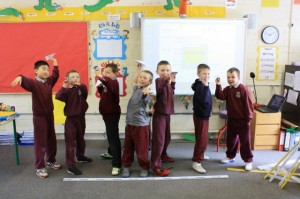
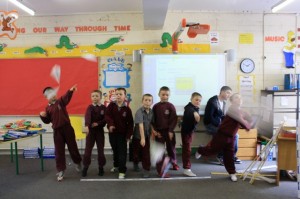
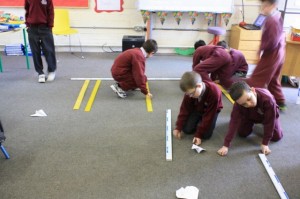
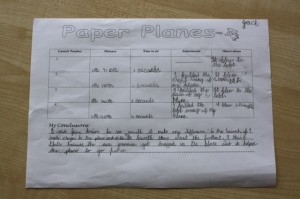
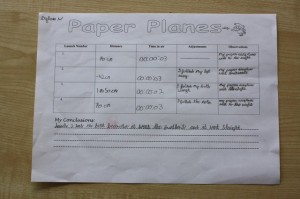
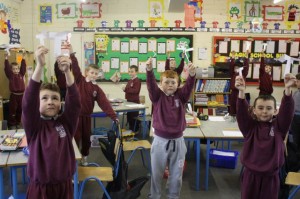
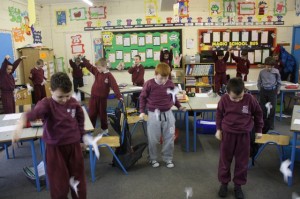
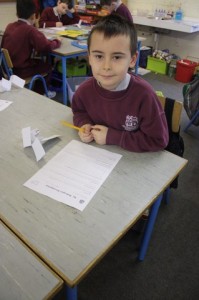
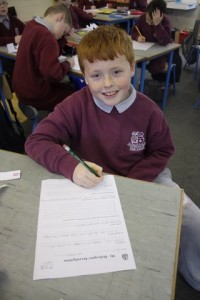
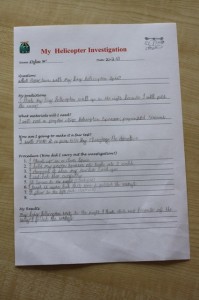
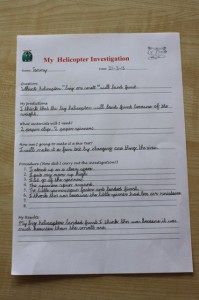
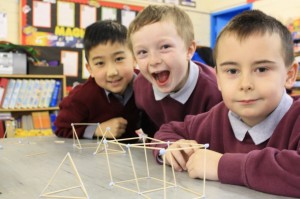
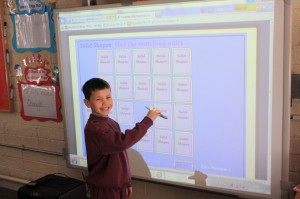
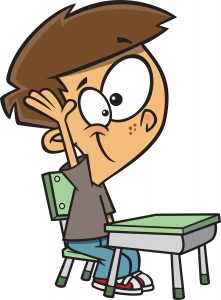


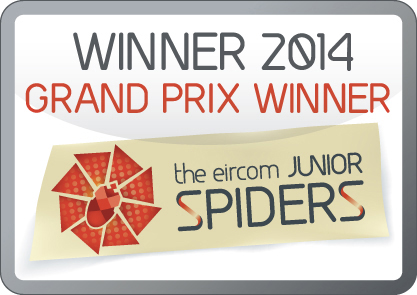
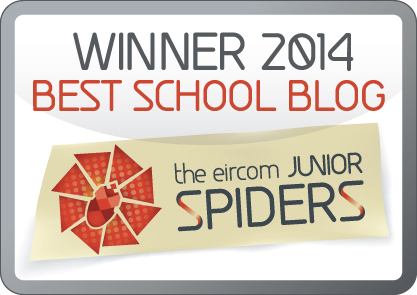


8:35 pm on June 19th, 2013
It was really fun throwing the paper aeroplane. We were lucky it didn’t hit someone :}